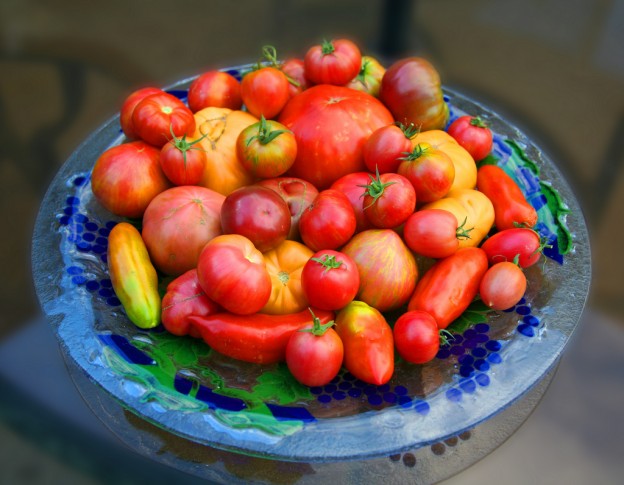
Photo: jitze/Flickr
If you’re expecting the expected — that this post will feature poets who write about food — you’ll want to guess again.
Lisa Price, a child and adolescent psychiatrist practicing in Cambridge, writes below about getting her own Kindergarten-age kids to really think about the food they’re tasting — through poetry. She shares with us her success by way of The Family Dinner Project Family Blog.
Lisa Price, M.D.
Slowing down is no small feat when I sit down to dinner with my 5-year-old daughter and son. Their ordinary pace is a skip or run, which is delightful on a walk through local woods. But at dinnertime, it’s easy for them to plunge into their meal, leaving me to find them half done before I’ve even sat down.
I can contribute to that fast pace as well. Shifting between work and home, I arrive in high gear, driven to get dinner on the table. If I’m not careful, I can be quick to step away, beginning to clear dishes mid-meal. This is despite my strong awareness of the preciousness of this time – having us all together in one place, held by our need to be nourished by our meal and our connection with each other. I’m aware of mindfulness research that has shown that children who are able to slow down and be present are more relaxed, less anxious, and better able to focus and excel in school. I have realized that we can all benefit from slowing down.
Creating food poems is one way I’ve discovered to stretch out our mealtime. One day, as we were eating fresh raspberries, I picked up a berry, closed my eyes and inhaled with a long, drawn breath. My children were rapt. Simply taking time to behold the small jewel and appreciate its aroma helped me relax and piqued their curiosity. After slowly chewing the fruit, I shared my poem, a haiku-like piece of a few words: “Soft pillows, furry on my tongue. Tart. Smiling.” They giggled.
I offered ideas: consider the color, smell, taste. Consider the season. How does it feel on your tongue, in your tummy? What mood are you in after tasting it? I remembered Kenneth Koch’s beautiful book, “Wishes, Lies, and Dreams: Teaching Children To Write Poetry.” Eventually a celebrated writer and professor of English at Columbia University, Koch was interested in a new forum for teaching the craft in his earlier years. In 1968, with little precedent, he began to regularly visit children in Manhattan’s P.S. 61 classrooms. Resisting the belief that youth could not write poetry, Koch recognized the children’s bright spirits, their willingness to speak in unimagined ways and their joy in the process: “The sea is like a blue velvet coat” wrote one of his 4th graders.
Koch’s work spurred me to suggest playful, unexpected, even silly lines. I encouraged my kids to draw connections through time and space. Does the warm potato on your plate remind you of the farm stand where we found it (a logical connection likely to be made by a younger child), or the toasty blanket around your feet at last night’s fire (a more complex association that an older elementary child might make)? Does the edamame popping out of its shell remind you of froggy hops at playtime today? I also learned that I’d best not make any suggestion, as my kids would echo my words, leaving me to wonder about their own thoughts.
We each began taking turns. They often asked me to go first, feeling a bit shy in the moment. But as they began to reflect on their experiences, they took their turns, too. Their lines were endearingly concrete. After relishing a favorite fruit’s sourness, my son triumphantly asked us to listen to his poem: “Kumquats surprise me. Make me have a face.” That same meal, my daughter enjoyed a cherry tomato’s pop: “Tomatoes taste good when I eat them. Tomatoes spray inside my mouth!”
We turn to the poems now and again, not a nightly ritual but a treat in themselves. I wonder what my children will say a year from now. Together, we are all slowing down, listening more closely to all before us, within ourselves and in each other.
Lisa F. Price, MD, is a child and adolescent psychiatrist in Cambridge, MA.
